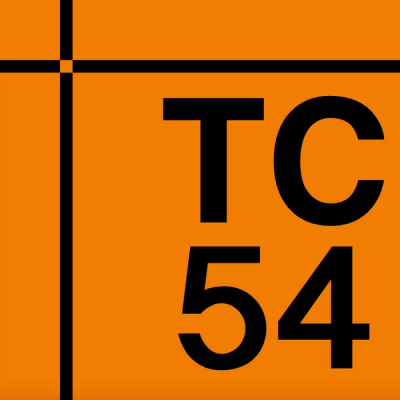
Security News
38% of CISOs Fear They’re Not Moving Fast Enough on AI
CISOs are racing to adopt AI for cybersecurity, but hurdles in budgets and governance may leave some falling behind in the fight against cyber threats.
A merkleized unidirectional data flow for state verification across multiple chains
Merklux is a merkleized unidirectional data flow for state verification across multiple chains. Originally, it is designed to provide a way to verify state transition of the plasma chain on the root chain. While we can reduce the transaction costs by submitting only the block headers of the plasma chain, we don't have a way to verify the plasma chain's state transition on the root chain. It is because the nodes on the root chain cannot access the state of the plasma chain. Using Merklux, we can reenact the state transition of the plasma chain on the root chain. And for an efficiency Merklux manages the states with sharded namespaces and it reduces the transition costs for state transition verification.
And Merklux supports an accusatorial system to guarantee the state of the side chain. Plasma Plant is an implemenation of the plasma which uses an accusatorial system with Merklux.
npm install -g truffle
npm install -g ganache
npm install
Thus you can start the dApp for demonstration with the following command. (This demo dApp uses ReactJS and Drizzle)
npm run start
Test cases include the information about how the functions work, but also includes a demo scenario. Running and reading the test cases will help you understand how it works.
npm run test
State verification
const primary = '0xACCOUNT'
it('should reenact the state transitions', async () => {
// Deploy a MerkluxTree to the child chain
const treeOnChildChain = await MerkluxTree.new({ from: primary })
// Make state transitions
await treeOnChildChain.insert('key1', 'val1', { from: primary })
await treeOnChildChain.insert('key2', 'val2', { from: primary })
// Snapshot the state
const firstPhaseRootEdge = await treeOnChildChain.getRootEdge()
const firstPhaseRootHash = firstPhaseRootEdge[2]
// Get data to commit
// getDataToCOmmit() is defined in the MerkluxCase.test.js
const dataToCommit = await getDataToCommit(treeOnChildChain, firstPhaseRootHash);
// Make extra state transitions
await treeOnChildChain.insert('key3', 'val3', { from: primary })
await treeOnChildChain.insert('key4', 'val4', { from: primary })
// Snapshot again
const secondPhaseRootEdge = await treeOnChildChain.getRootEdge()
// Create a case to verify the state transition in another chain
const caseOnRootChain = await MerkluxCase.new(...firstPhaseRootEdge, ...secondPhaseRootEdge, { from: primary })
// Commit nodes and values
const commitNodes = async (nodes) => {
for (const node of nodes) {
await caseOnRootChain.commitNode(...node, { from: primary })
}
}
const commitValues = async (values) => {
for (const value of values) {
await caseOnRootChain.commitValue(value, { from: primary })
}
}
await commitNodes(dataToCommit.nodes)
await commitValues(dataToCommit.values)
// It will be reverted when the committed nodes and values does not match with the firstPhaseRoot
await caseOnRootChain.seal({ from: primary })
// insert correct items
await caseOnRootChain.insert('key3', 'val3', { from: primary })
await caseOnRootChain.insert('key4', 'val4', { from: primary })
// try proof
await merkluxCase.proof({ from: primary })
// The status of the case is now SUCCESS
assert.equal(
(await merkluxCase.status()).toNumber(),
Status.SUCCESS,
'it should return its status as SUCCESS'
)
})
Please check MerkluxCase.test.js to get more detail information.
Sharded namespaces
To be updated
Merklux uses Christian Reitwießner's patricia-trie for its basic data structure. And he already mentioned that it can be used for verifying evm-based sidechain executions. Thus, this is kind of an implementation case of his idea.
FAQs
A merkleized unidirectional data flow for state verification across multiple chains
The npm package merklux receives a total of 0 weekly downloads. As such, merklux popularity was classified as not popular.
We found that merklux demonstrated a not healthy version release cadence and project activity because the last version was released a year ago. It has 1 open source maintainer collaborating on the project.
Did you know?

Socket for GitHub automatically highlights issues in each pull request and monitors the health of all your open source dependencies. Discover the contents of your packages and block harmful activity before you install or update your dependencies.

Security News
CISOs are racing to adopt AI for cybersecurity, but hurdles in budgets and governance may leave some falling behind in the fight against cyber threats.

Research
Security News
Socket researchers uncovered a backdoored typosquat of BoltDB in the Go ecosystem, exploiting Go Module Proxy caching to persist undetected for years.

Security News
Company News
Socket is joining TC54 to help develop standards for software supply chain security, contributing to the evolution of SBOMs, CycloneDX, and Package URL specifications.